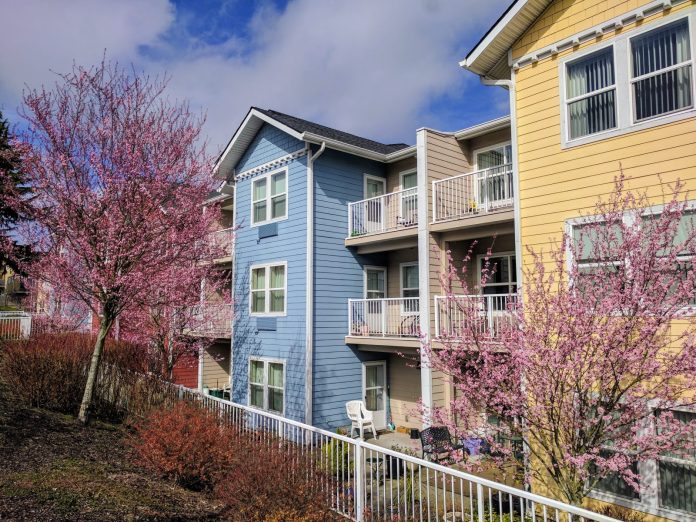At some point, maybe in two years or ten years, the endless rise of housing costs in Seattle will stop. We might see a recession. Hiring may slow. Incomes could flatten. Even if we don’t build one more unit of housing, rents can’t rise indefinitely.
Right now, the rhetoric pushing for density is Seattle relies heavily on an ECON 101 narrative about housing costs. This sometimes goes so far that people voicing doubt about private construction reducing housing costs are conflated with NIMBYs. However, when housing costs stop rising this rhetoric will have to shift. If Seattle enters a recession and prices drop, we still need to push density. Further, the ECON 101 argument has shown limited success in overturning the vast amount of single-family zoning in Seattle.
Fortunately, the argument for urbanism is strong even without relying on rising housing costs to make the case. The reasons below outline why density is so important. This isn’t meant to dismiss the values of rural living. It’s entirely understandable that people will pay a lot for privacy, space, and natural beauty. However, many people are choosing cities largely for the reasons below. We need to let our cities be cities and capitalize on the advantages of density.
Density Is Great For People’s Wallets
First, more people in a smaller area means the per capita cost of providing services drops dramatically. This means people also have more money to spend on other economic activity and have more security during recessions. Beyond their personal income, density also enhances social connections which also strengthens people’s safety net to avoid or rebound from personal economic hardship.
Density also increases the number of business which typically leads to more diverse economies–although density doesn’t always equal granularity. This avoids the systemic risks associated with the failure of a single large employer or single industry. Perhaps most importantly though, density is a critical ingredient for innovation. Easy exchange of ideas and knowledge is the seed of innovation. Proximity for businesses and people allows knowledge and ideas to flow more freely.
Density Helps The Environment
Dense areas see remarkably lower emissions. This is likely due to transportation modes in large part. Density increases the use of public transit, walking and biking, and even if people drive, they tend to drive shorter distances. However, people also often live in smaller spaces that use energy more efficiently due to sharing walls, ceilings, and floors. Further, density reduces sprawl which dramatically reduces deforestation and travel distances.
Lastly, density makes political solutions for environmental problems easier to achieve. Grassroots efforts have more influence at the local level, and density can reduce the cost of adopted solutions. By lowering energy consumption per household, density makes taxes on carbon easier to bear.
Density Improves Health Outcomes
Density is correlated with longer lifespans. This is true even when controlling for other factors.
There are many plausible explanations for why urban areas perform better: more access to care, stronger social support networks, lower incidences of bad habits such as smoking, higher rates of cardiovascular activity such as walking, less driving, and much more. For rural areas, this adds up to higher suicide rates, more traffic fatalities, and more heart attacks.
Density Pushes Politics In A Progressive Direction
It’s possible people with progressive political leanings tend to move to cities but it actually seems more likely that density makes people more progressive. There’s a number of explanations for this phenomenon: people rely more heavily on each other, there are higher incidences of social connection to a diversity of folks, negative externalities are more apparent, physical proximity makes organizing for change easier, the cost of government services–progressive policies–is lower.
Density (Done Right) Is Fun
Density increases access to a diverse set of leisure activities. This include traditional establishments like restaurants, bars, shopping, art, theater, and music but also extends to social groups. Do you like to knit and drink craft beer? Do you like to talk about transportation planning? With a sufficiently dense city, these social groups might even meet within walking distance of your home. There are a handful of things that are more accessible in rural areas–for example, outdoor activities–and many activities cost more in cities but there are simply more options. Also if a city does density right, it can even maintain access to the outdoor recreation. Seattle, Portland, and Vancouver have mostly succeeded.
Density Fights Traffic Congestion
One of the most frequent conversations with anyone that owns a car revolves around traffic congestion. In the 1800s, cities were miserable because of raw sewage and pollution. Today, people are miserable because of hours spent sitting in traffic. This could largely be resolved if people could make more trips without their car. That outcome is only possible with density: living close enough to people, jobs and amenities to walk, bike or take high quality transit.
This argument isn’t meant to suggest density is a panacea. It’s only meant to put forward obvious arguments that support density but have nothing to do with housing costs. Whatever happens to rent prices, density will improve the quality of life in cities. Density means being closer to your friends, your favorite activities, your job, and much more. Density alone is worth fighting for.

Owen Pickford
Owen is a solutions engineer for a software company. He has an amateur interest in urban policy, focusing on housing. His primary mode is a bicycle but isn't ashamed of riding down the hill and taking the bus back up. Feel free to tweet at him: @pickovven.

